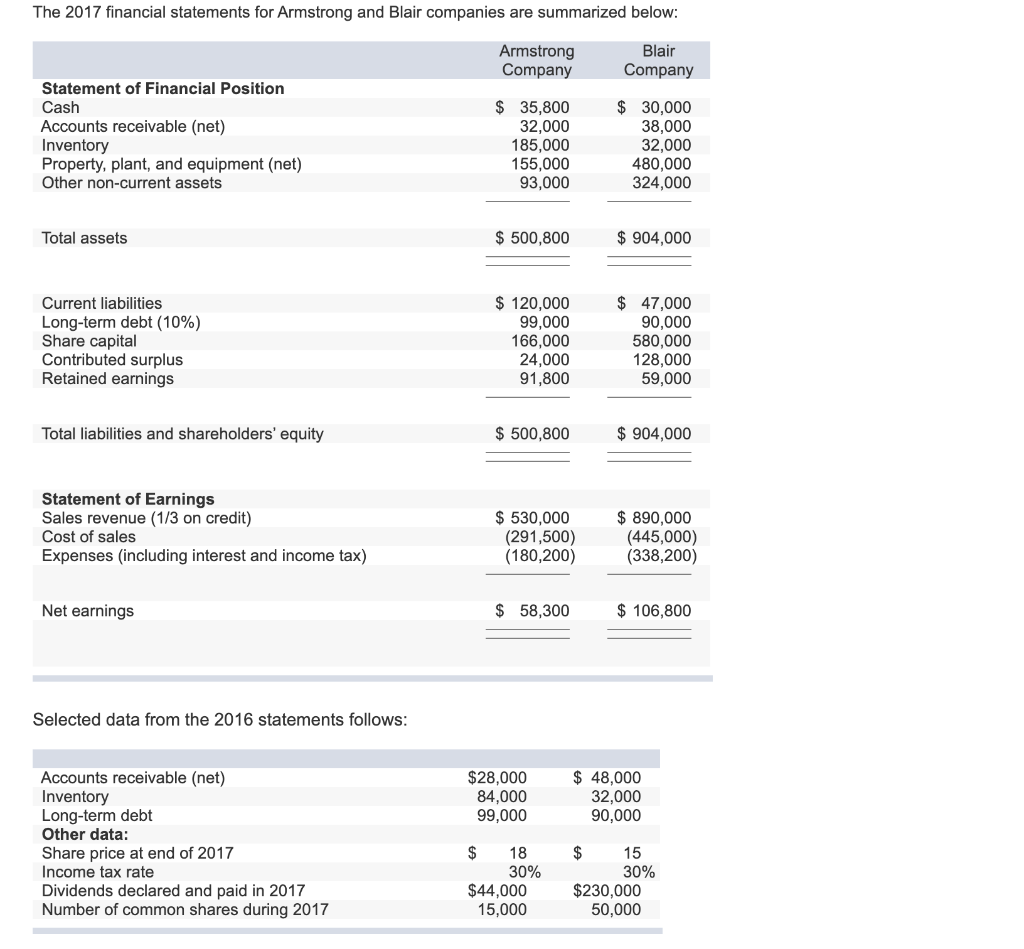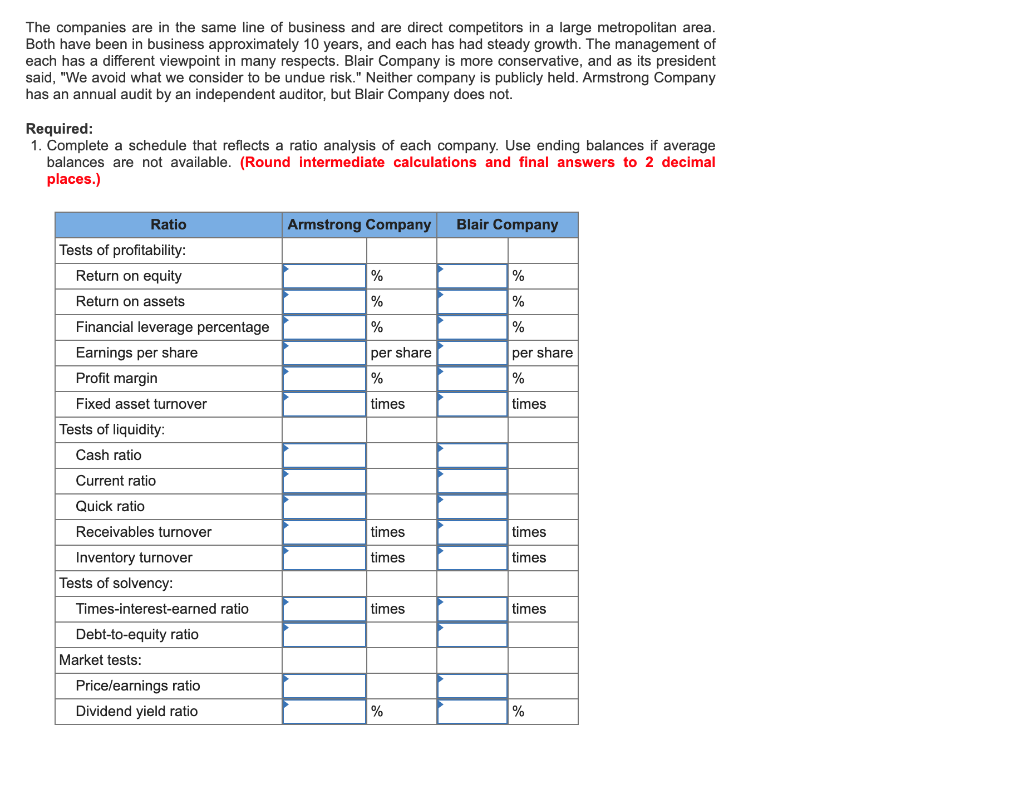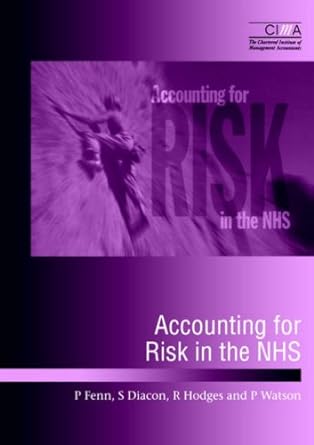

The 2017 financial statements for Armstrong and Blair companies are summarized below: Armstrong Company Blair Company $ $ Statement of Financial Position Cash Accounts receivable (net) Inventory Property, plant, and equipment (net) Other non-current assets 35,800 32,000 185,000 155,000 93,000 30,000 38,000 32,000 480,000 324,000 Total assets $ 500,800 $ 904,000 Current liabilities Long-term debt (10%) Share capital Contributed surplus Retained earnings $ 120,000 99,000 166,000 24,000 91,800 $ 47,000 90,000 580,000 128,000 59,000 Total liabilities and shareholders' equity $ 500,800 $ 904,000 Statement of Earnings Sales revenue (1/3 on credit) Cost of sales Expenses (including interest and income tax) $ 530,000 (291,500) (180,200) $ 890,000 (445,000) (338,200) Net earnings $ 58,300 $ 106,800 Selected data from the 2016 statements follows: $28,000 84,000 99,000 $ 48,000 32,000 90,000 Accounts receivable (net) Inventory Long-term debt Other data: Share price at end of 2017 Income tax rate Dividends declared and paid in 2017 Number of common shares during 2017 $ 18 30% $44,000 15,000 $ 15 30% $230,000 50,000 The companies are in the same line of business and are direct competitors in a large metropolitan area. Both have been in business approximately 10 years, and each has had steady growth. The management of each has a different viewpoint in many respects. Blair Company is more conservative, and as its president said, "We avoid what we consider to be undue risk." Neither company is publicly held. Armstrong Company has an annual audit by an independent auditor, but Blair Company does not. Required: 1. Complete a schedule that reflects a ratio analysis of each company. Use ending balances if average balances are not available. (Round intermediate calculations and final answers to 2 decimal places.) Armstrong Company Blair Company % % per share per share Ratio Tests of profitability: Return on equity Return on assets Financial leverage percentage Earnings per share Profit margin Fixed asset turnover Tests of liquidity: Cash ratio Current ratio Quick ratio times times Receivables turnover times times times times times times Inventory turnover Tests of solvency: Times-interest-earned ratio Debt-to-equity ratio Market tests: Price/earnings ratio Dividend yield ratio








